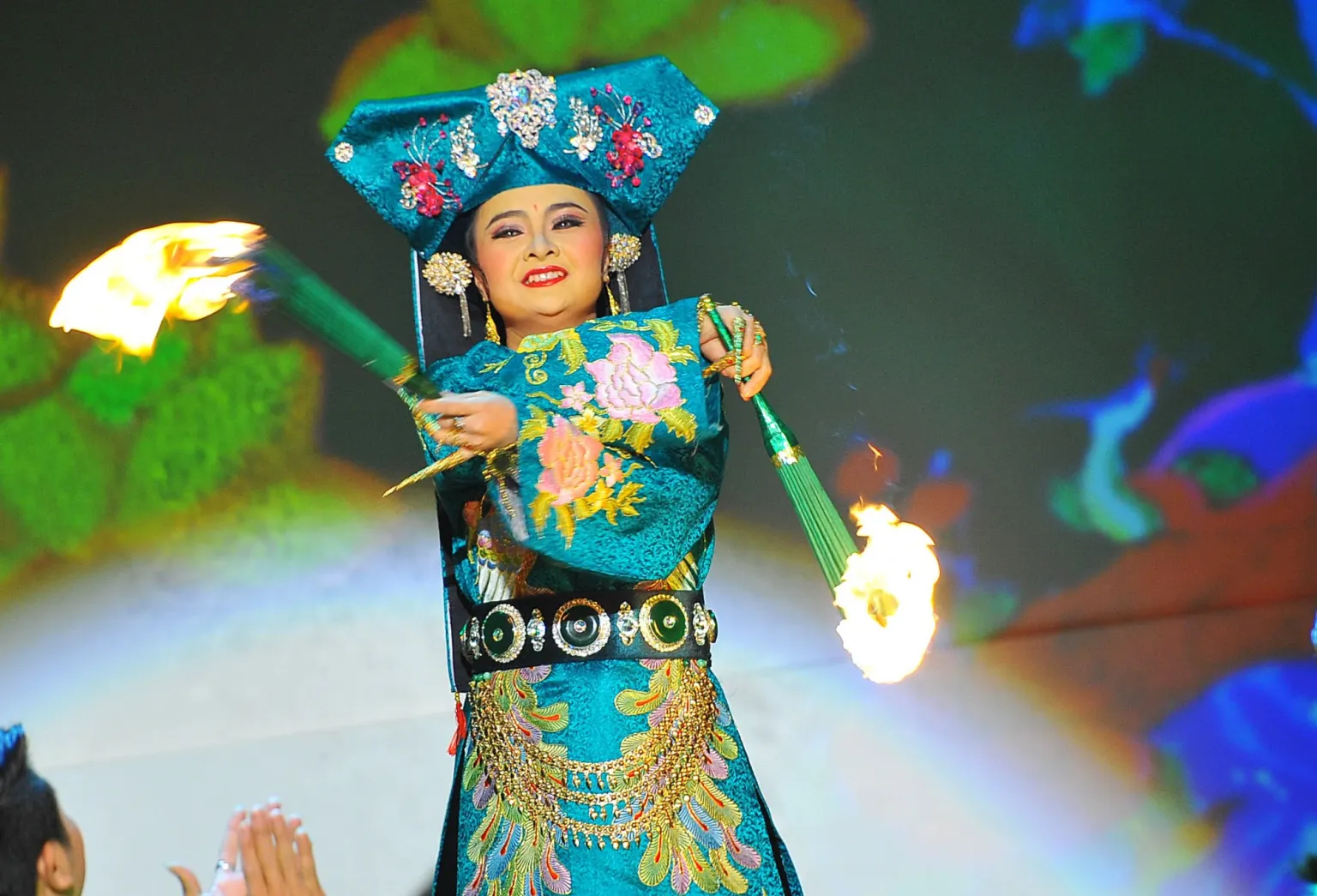
The belief in the Mother Goddesses in the Three Realms is a form of worshiping the Mother incarnating in the sky, rivers, forests, and mountains, which is formed on the foundation of the worshiping of Goddesses.
People worship Mother Goddess Lieu Hanh along with the Goddesses who govern the sky, the forests, the rivers, and historical or legendary figures who contributed to the country and the people. According to bibliographies and legends, she was a fairy who came to earth, became a human, then a Buddhist nun, and was honored as “Mother of the World,” one of the four immortal saints of the Vietnamese people.
Since the 16th century, this belief has grown through cultural and religious activities and has a profound influence on the social and spiritual life of Vietnamese people.
The worship of Mother Goddesses of the Three Realms was practiced in the north-western, north-eastern, northern, and north-central regions and Ho Chi Minh City. It has spread to many localities around the country. Nam Dinh province is one of the localities having many typical centres of worshiping Mother Goddess Lieu Hanh, including places that preserve the legend of her descendants, such as Phu Day, Phu Nap, and nearly 400 other temples.
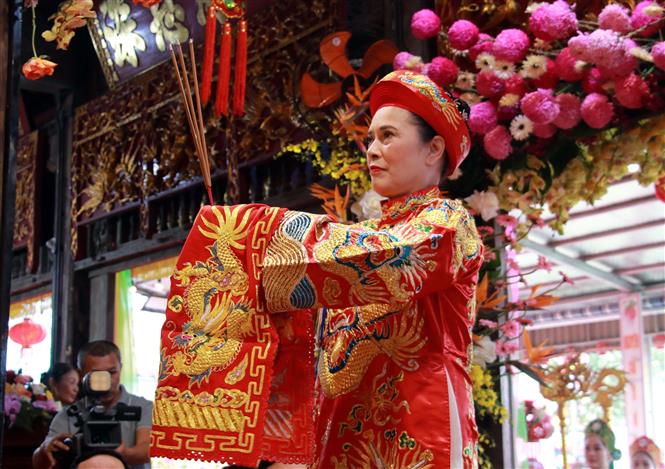
Practitioners of the worshipping tradition include temple guardians, ritual priests, spirit mediums, mediums’ assistants, musicians who perform music and songs for the spirits, disciples, and lay adherents who share the same beliefs in the spiritual power, supernatural strength, and protection of the pantheon of Mother Goddesses.
The guardians take care of the temples, offer daily incense and flowers to spirits, instruct worshippers and pilgrims in ritual acts and play an active role in organising spirit possession rituals and festivals. Many guardians inherit their position from their families.
Priests perform ceremonies, which involve conveying the wishes of the devotees and communities to the Mother Goddesses and spirits through prayer and petition sheets. The ritual expertise of male priests is usually passed down to sons or disciples.
Male and female spirit mediums are initiated before performing the spirit possession rituals at the temples. Each spirit possession ritual consists of 5-36 spirit incarnations, and each spirit has its costume, dance, songs, and offerings.

The basic practices of the Vietnamese belief in the Mother Goddesses of Three Realms are the trance rituals and festivals. The Day Shines (Phu Day) festival takes place from lunar March 3-10 in Kim Thai commune, Vu Ban district, Nam Dinh province on the death anniversary of Mother Goddess Lieu Hanh with rituals, folk performances, word formation, and the palanquin procession of Mother Goddess Lieu Hanh.
Through folk cultural elements such as costumes, music, “van” singing, dancing, and folk performances in trance performances and festivals, Vietnamese people express their concepts of history, cultural heritage, gender roles, and ethnic identity. The significance of the belief in the Mother Goddesses of Three Realms lies in that it meets the daily needs and aspirations of people such as good health, peace, and prosperous business.

Practices related to the belief in the Mother Goddesses demonstrates the patriotic tradition and gratefulness to people who made a great contribution to the nation and people. This is specifically evidenced by the system of worshipped gods and goddesses, which includes about 70 gods/goddesses, many of whom are historical figures and deified such as Tran Hung Dao and Pham Ngu Lao or Nguyen Xi.
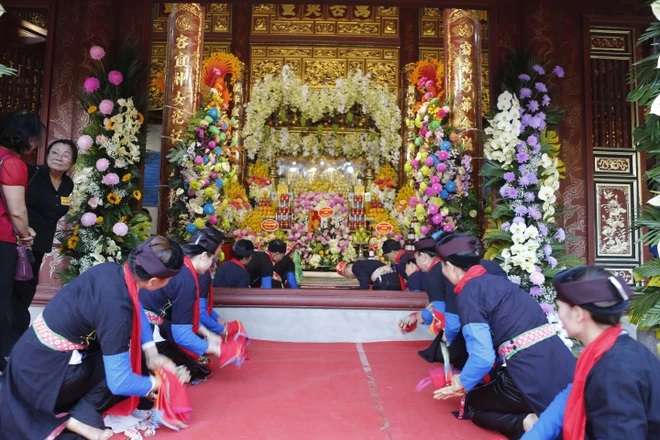
With the openness of the belief, everyone can participate, regardless of political orientation, religion, age, gender, or profession. Vietnamese worship the Mother Goddesses and local saints, and respect and accept the gods and cultural elements of some ethnic groups including Muong, Tay, Nung, or Dao.
The national costumes and melodies in “van” singing carry the nuances of the folk culture of ethnic groups in the northern mountainous region. The gods/goddesses of ethnic minority origin demonstrate cultural exchange, equal relationships, and close bonds between ethnic groups in Vietnam.

The trance ritual is a distinctive performance that beautifully combines spiritual beliefs with the rich folk culture of the Vietnamese people. Within the ritual, practitioners often take on the roles of historical figures, such as revered military generals or esteemed founding fathers. Through song and dance, they skillfully narrate historical stories and express the wishes and aspirations of the people.
People practice and participate in trance performances and festive activities to pray for health, luck, and happiness which are everyone’s aspirations in daily life, and guide people to compassion and kindness as the foundation of principles of people-to-people behaviour. Worshiping the Mother Goddess – a symbol of the most sacred mother contributes to promoting the value and role of women in family life and Vietnamese society. Besides, the festivals, trance performance, and “van” singing with folk cultural elements such as costumes, music, and dance are carried out in an artistic manner in association with the belief in worshiping the Mother Goddess in the Three Realms. That is also a method to preserve the history, heritage, and cultural identity of the Vietnamese people.
The main and central ritual of the “Practices Related to the Viet Beliefs in the Mother Goddesses in Three Realms” is the trance ritual known as a form of folk performance, expressing faith in the descending of gods in the temples.
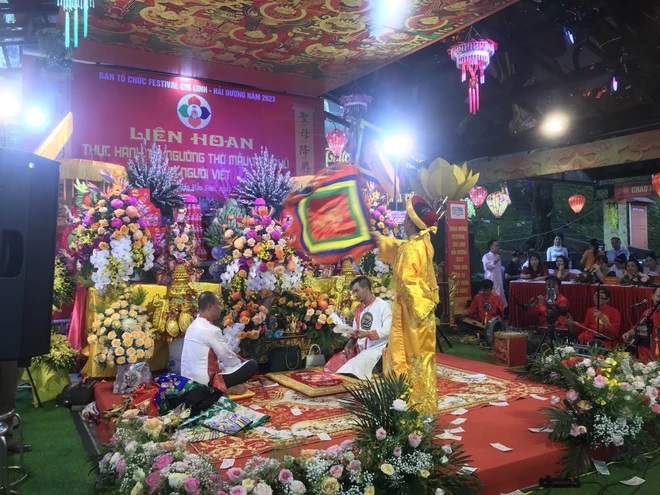
At the conference marking the 20th anniversary of UNESCO’s Convention for the Safeguarding of the Intangible Cultural Heritage on November 29, Prof. Dr. Le Thi Thu Hien, Director of the Department of Cultural Heritage (Ministry of Culture, Sports and Tourism) said that after the “Practices Related to the Viet Beliefs in the Mother Goddesses in Three Realms” was recognised as Intangible Cultural Heritage of Humanity, provinces and cities developed action programme to preserve and promote values of the heritage.
Most recently, on October 23, the fourth festival featuring Mau Thuong Ngan (Mother Goddess of Forest) worship and new rice festival opened at the national historical relic of Dong Cuong Temple in Van Yen district, Yen Bai province.
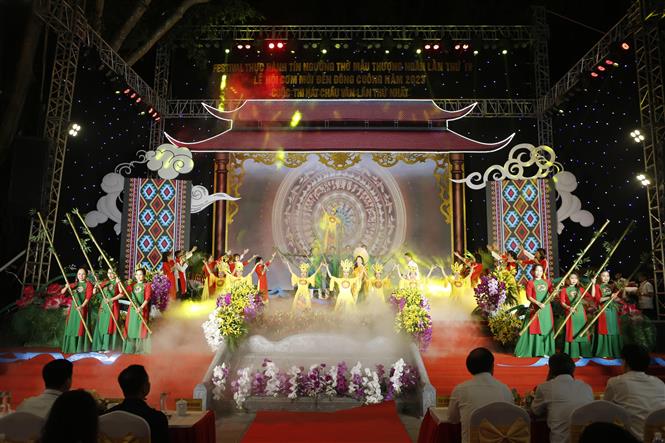
At the festival, visitors and people had a chance to see performance of more than 100 artisans and mediums from over 20 provinces and cities nationwide from October 17-25, and enjoy performance in a “van” singing contest.
To implement the commitments that Vietnam made to preserve the heritage, it is necessary to perfect the legal framework for managing the practices related to the Viet Beliefs in the Mother Goddesses in Three Realms, and setting up limitations in using and exploiting the heritage.

The work of directing, inspecting, and supervising heritage practices needs to be strengthened.
Training and capacity building on heritage management, especially that of sacred and customary heritage, are needed for employees at cultural agencies at all levels.
It’s also necessary to honour, reward, and encourage artisans and heritage practitioners. Communication activities need to be promoted to help people properly understand the core values of the heritage.

Vietnam possesses 15 intangible cultural heritage elements recognised by UNESCO including Nha Nhac – Vietnamese court music, Space of gong culture, Quan ho Bac Ninh folk songs, Ca Tru singing, Giong festival of Phu Dong and Soc temples, Xoan singing of Phu Tho province, Worship of Hung Kings in Phu Tho, Art of Don ca tai tu music and song in southern Vietnam, Vi and Giam folk songs of Nghe Tinh, Tugging rituals and games, Practices related to Vietnamese beliefs in the Mother Goddesses of Three Realms, the art of Bai Choi in central Vietnam, Then singing practice of Tay, Nung, Thai ethnic people, The art of Xoe Thai dance, and The art of pottery making by Cham ethnic people./.